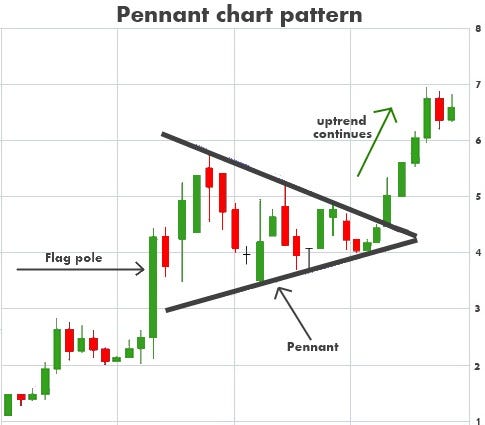To ensure accurate and reliable insights, it is essential to evaluate the accuracy of data sources as well as AI-driven platforms for trading stocks. A poor quality of data could cause inaccurate predictions as well as financial losses. This can lead to doubt about the platform. Here are 10 top methods to assess the quality of data and the source:
1. Verify the source of data
Verify the source: Make sure that the platform has data from reputable sources (e.g. Bloomberg, Reuters Morningstar or exchanges such as NYSE and NASDAQ).
Transparency. Platforms should make their data sources clear and regularly updated.
Do not rely on one source: reliable platforms will typically combine data from multiple sources to lessen the chance of bias.
2. Assess Data Freshness
Real-time and. Delayed Data: Find out if the platform is providing real-time information or delayed information. Real-time data is crucial to trade in active fashion. Delay data is sufficient for long-term analyses.
Update frequency: Make sure to check the frequency at when data is changed.
Historical data accuracy: Ensure historical data is consistent and free of anomalies or gaps.
3. Evaluate Data Completeness
Look for missing information Find out if there are any missing tickers or financial statements, aswell gaps in the historical data.
Coverage: Check whether the platform you are using supports an extensive range of stocks and indices that are relevant to your strategy.
Corporate actions: Ensure that the platform can account for stock splits or dividends. Also, check if it can account for mergers.
4. Accuracy of Test Data
Cross-verify data : Check the platform's data to that of other reliable sources to ensure consistency.
Search for errors through examining outliers or incorrect financial metrics.
Backtesting. Make use of the historical data to test your trading strategy and see whether it is in line with expectations.
5. Review Data Granularity
Level of detail The platform provides granular information such as intraday price, volume, spreads between bid and ask, as well as the depth of your order book.
Financial metrics: Make sure the platform has detailed financial statements such as the balance sheet, income statement and cash flow. Also, make sure the platform has key ratios, such as P/E (P/B), ROE (return on equity) etc. ).
6. Clean up and processing of data
Normalization of data: To ensure uniformity, make sure that the platform normalizes every data (e.g. by adjusting for dividends and splits).
Handling outliers (handling anomalies) Verify that the platform is able to handle anomalies and outliers.
Incorrect data: Determine if the platform uses solid methods to fill in missing data points.
7. Examine the consistency of data
Make sure that all data is aligned to the same timezone. This will prevent any discrepancies.
Format consistency: Make sure that the data is presented in a consistent format.
Cross-market consistency: Verify that data from multiple markets or exchanges is harmonized.
8. Relevance of Data
Relevance of the data to your trading strategy: Make sure the data is aligned with your style of trading.
Features Selection: Find out whether the platform has useful features, such as economic indicators, sentiment analysis as well as news data which will improve the accuracy of forecasts.
Examine Data Security Integrity
Data encryption - Ensure that your platform uses encryption to secure data during transmission and storage.
Tamper-proofing (proof against tampering) Verify to be sure that the data has not been altered or manipulated by the computer.
Check for compliance: The platform should comply with the data protection regulations.
10. Transparency of the AI model on the Platform could be tested
Explainability: The system should offer insight into how AI models employ data to produce predictions.
Check if there is a bias detection feature.
Performance metrics: Assess the reliability of the platform through analyzing its history, performance metrics, and recall metrics (e.g. precision and accuracy).
Bonus Tips
Reputation and reviews of users Check out feedback from users and reviews to assess the reliability of the platform and data quality.
Trial period. You can try a free demo or trial to test out the software and its features.
Customer support: Ensure the platform has a solid customer support to resolve issues related to data.
If you follow these guidelines, you can better assess the quality of data and sources of AI software for stock prediction to ensure you take an informed and trustworthy trading decision. Take a look at the top more help on ai copyright trading bot for more info including stock ai, best artificial intelligence stocks, using ai to trade stocks, best ai stock, invest ai, trade ai, chart analysis ai, trading chart ai, best ai stock, chart analysis ai and more.

Top 10 Tips To Evaluate The Effectiveness Of Ai Stock Predicting/Analyzing Trading Platforms
Scalability is an important factor in determining whether AI-driven platforms for stock prediction and trading are able to handle the increasing demand of users, data volumes and market complexity. Here are 10 best strategies for evaluating scaleability.
1. Evaluate Data Handling Capacity
Tips: Make sure that the platform you are using is able to process and analyze huge data sets.
Why: Scalable systems must handle data volumes that are growing without performance degradation.
2. Test Real-Time Processor Capabilities
Tip: Check the capability of the platform to process live information streams, including live stock prices, or breaking stories.
What's the reason? The analysis in real-time of trading decisions is crucial because delays could lead you to miss opportunities.
3. Cloud Infrastructure and Elasticity The Cloud Infrastructure and Elasticity
Tips: Make sure that your cloud platform (e.g. AWS, Google Cloud or Azure) and has the ability to scale resources dynamically.
The reason: Cloud platform elasticity allows the system's size to adapt based on use.
4. Algorithm Efficiency
Tip: Assess the computational efficacy (e.g. deep-learning, reinforcement learning) of the AI models that are used to predict.
Reason: Complex algorithmic structures can consume a lot of resources. Optimising them is essential to scale them.
5. Study Parallel Processing and Distributed Computing
TIP: Make sure to check if the platform uses parallel processing frameworks or distributed computing frameworks.
The reason: These technologies allow more efficient data processing and analysis over many nodes.
Examine API Integration and Interoperability
Tips: Test the platform's ability to connect with APIs from outside (e.g. brokerage APIs, market data providers APIs).
Why: The platform is able to adjust to changing markets and sources of data thanks to seamless integration.
7. Analyze User Load Handling
Tip: Simulate the impact of high users to gauge how the platform performs under high load.
The reason: Scalable platforms must provide the same performance regardless of how many users there are.
8. Assessment of Model Retraining and the Adaptability
Tip: Determine how often and efficiently the AI models have been trained using new data.
The reason is that markets are always shifting, and models must to be able to change quickly to remain accurate.
9. Check for Fault tolerance and redundancy
TIP: Make sure your platform is equipped with failover and redundancy features to handle hardware or software malfunctions.
The reason: Downtime is expensive for trading. So fault tolerance is vital to scaling.
10. Monitor Cost Efficiency
Tip: Analyze the cost of expanding the platform, such as cloud resources, storage for data, and computational power.
The reason is that it should be at a cost that is affordable. This means balancing performance against expense.
Bonus Tip - Future-proofing
Check that the platform can adapt to changes in regulations and incorporates new technologies, such as quantum computing, or even advanced NLP.
These factors will help you evaluate the impact of AI-powered stock prediction and trade platforms. They'll also make sure that they are robust efficient, reliable and ready to expand, and future-proof. See the best good on ai stock trading bot free for site examples including best stock analysis website, stock ai, trading chart ai, using ai to trade stocks, stock analysis tool, chart ai trading, trader ai, trading with ai, trading ai bot, ai for stock trading and more.
